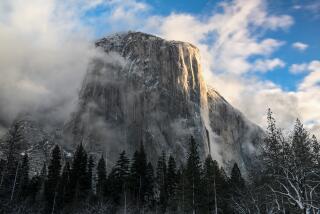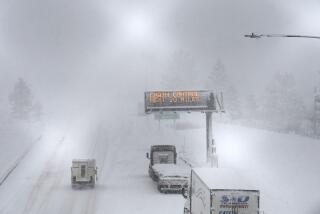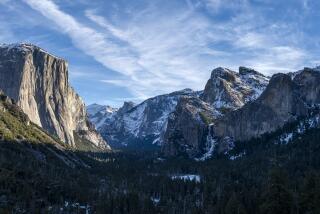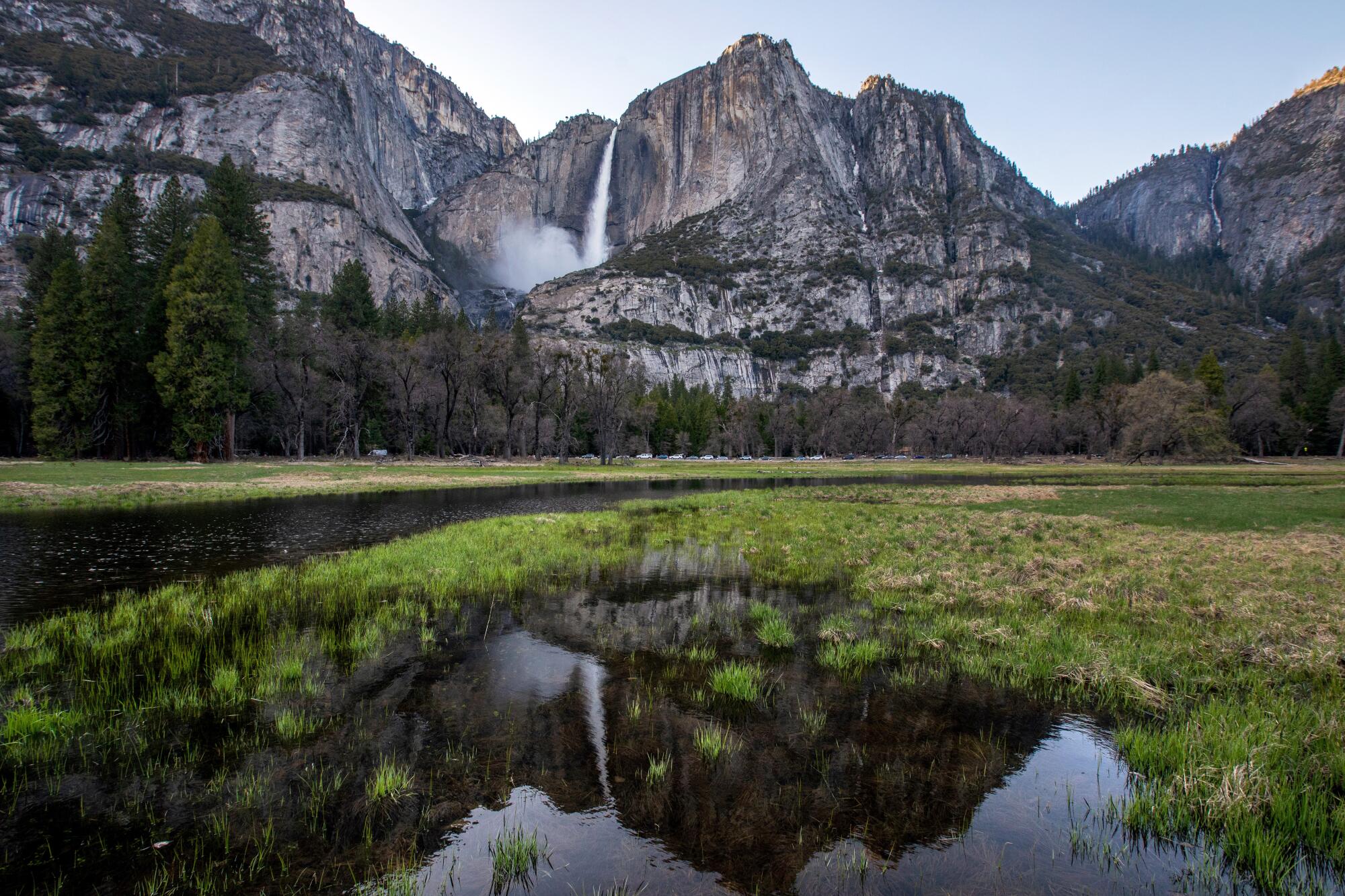
YOSEMITE NATIONAL PARK, Calif. — Signs of snowmelt-fueled deluge were everywhere in famed Yosemite Valley on Saturday as the normally placid Merced River surged over its banks, swamping roads, erasing swimming beaches, and turning meadows into murky sloughs.
For the record:
8:33 a.m. May 2, 2023An earlier version of this article said Yosemite Valley previously flooded in May 1997. The flooding occurred in January of that year.
Much of the valley was closed at 10 p.m. on Friday and the closures were expected to remain in place at least until Monday due to a jump in temperatures that turned deep piles of snow blanketing the Sierra Nevada range’s higher elevations into torrents of runoff.
The river, which winds through Yosemite Valley, was forecast to crest at a flood stage level of about 11 feet on Sunday morning, the highest in years. Flood warnings have been issued for Mariposa, Fresno, Tulare and Kings counties because of excess runoff.
“Anyone with reservations in Yosemite Valley,” park officials said, “will receive a full refund.”
Earlier in the day on Friday, visitors to Yosemite National Park marveled at the sights and sounds of countless new waterfalls spilling over the edges of towering cliffs surrounding the glacially carved valley as the Merced River expanded the boundaries of its floodplain below.
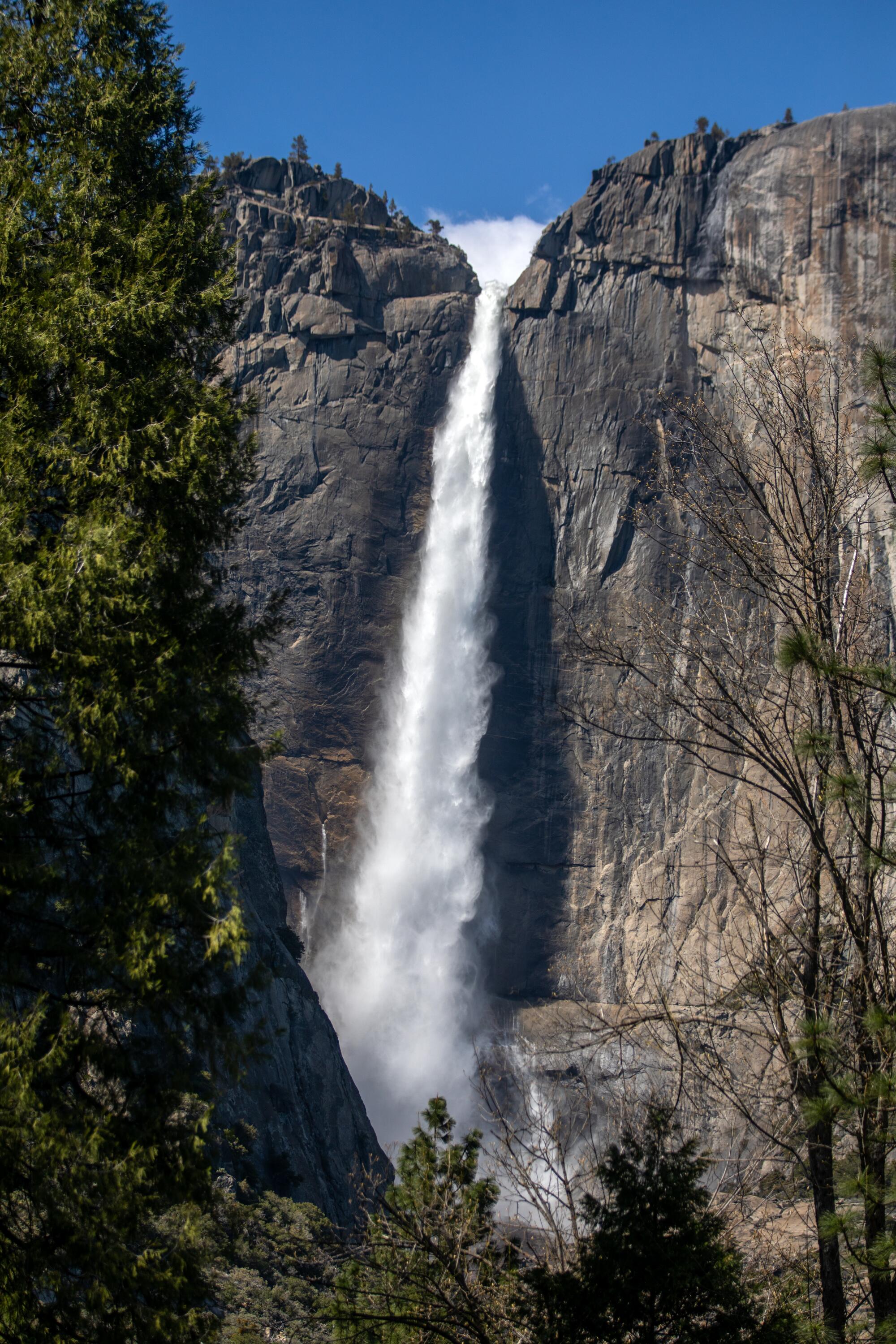
Rock climbers Jon and Amy Holt of Bellingham, Wash., definitely had a different image in mind when they planned a spring vacation that included scaling the granite cliff of El Capitan, an iconic vertical rock formation on the north side of the valley.
So far this year, however, “No one has climbed El Capitan,” Amy Holt, 27, said, “because the trail back down is buried in snow.”
“In fact, it was snowing when we arrived in the valley two weeks ago,” she said, “and the Merced River was at least 20 feet narrower and calm.”
“So, we’ve watched the water rise to where it is now,” she added, gazing across a stretch of the river forging new channels through a pine forest, “which is crazy.”
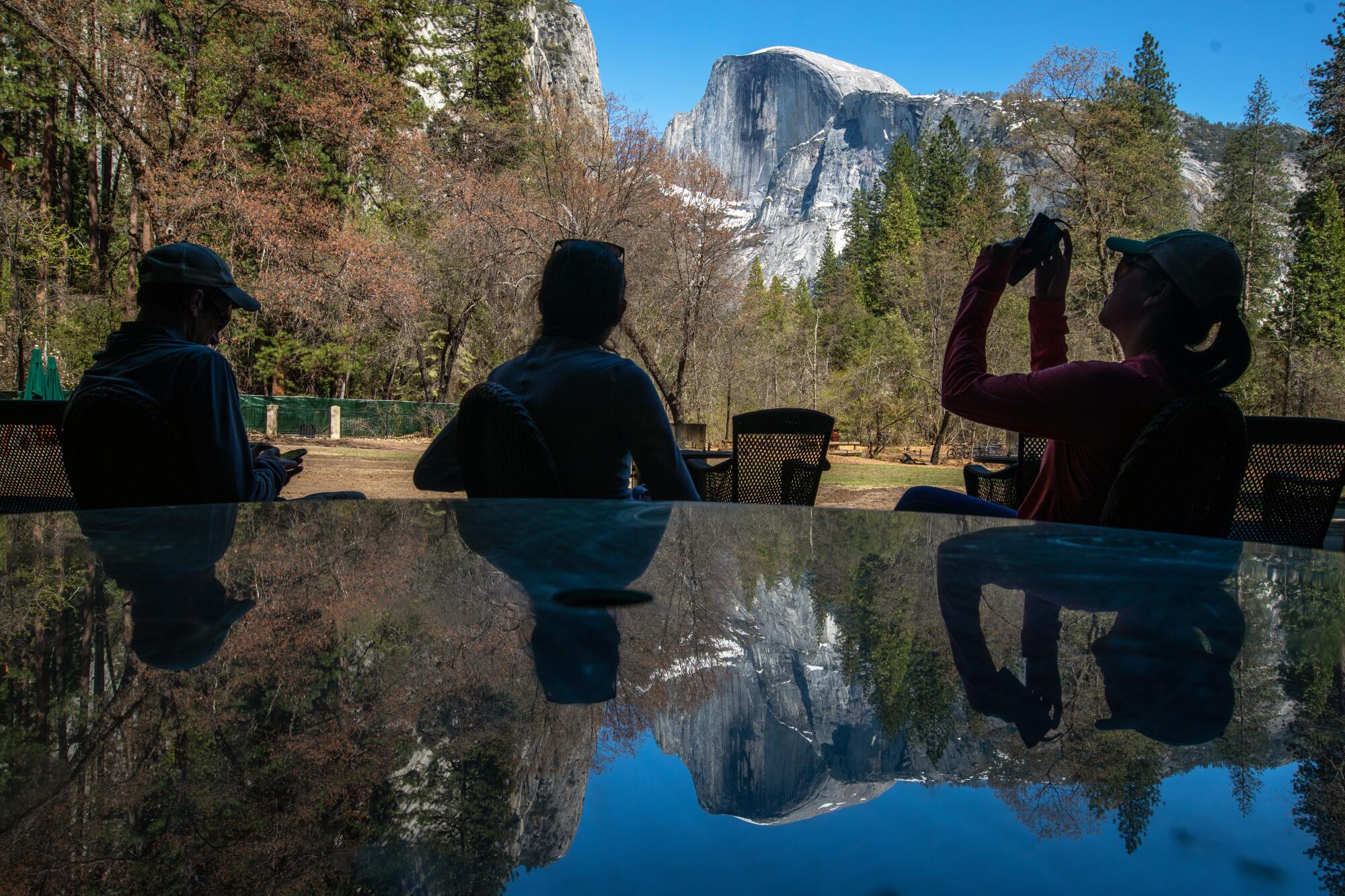
Vacationers Mitch and Peggy Pingle, of Broomfield, Colo., were also coming to terms with an unanticipated reality: They were picnicking in a serene meadow edged with lupine flowers that may soon be washed away.
“We’re enjoying a sweet spot near the river,” Peggy Pingle, 67, mused, “before the park closes this whole area down due to flooding.”
Record-breaking snow depths of a whopping 58 feet or more at higher elevations make it difficult to know exactly how wide a swath the Merced and its feeder creeks will cut through the 747,000-acre park visited annually by about 4 million people.
But the water is expected to begin receding next week, when the National Weather Service predicts that temperatures will dip into lows in the mid-30s.
Climate change coupled with drought, snowpack, wildfires and flooding has been one of the park’s biggest challenges in recent years, undermining the concept of Yosemite as a refuge where nature prevails unaffected by man-made forces.
Drought has enabled western pine bark beetles to kill large swaths of forest. Yosemite’s glaciers are melting, scientists say, primarily due to global warming.
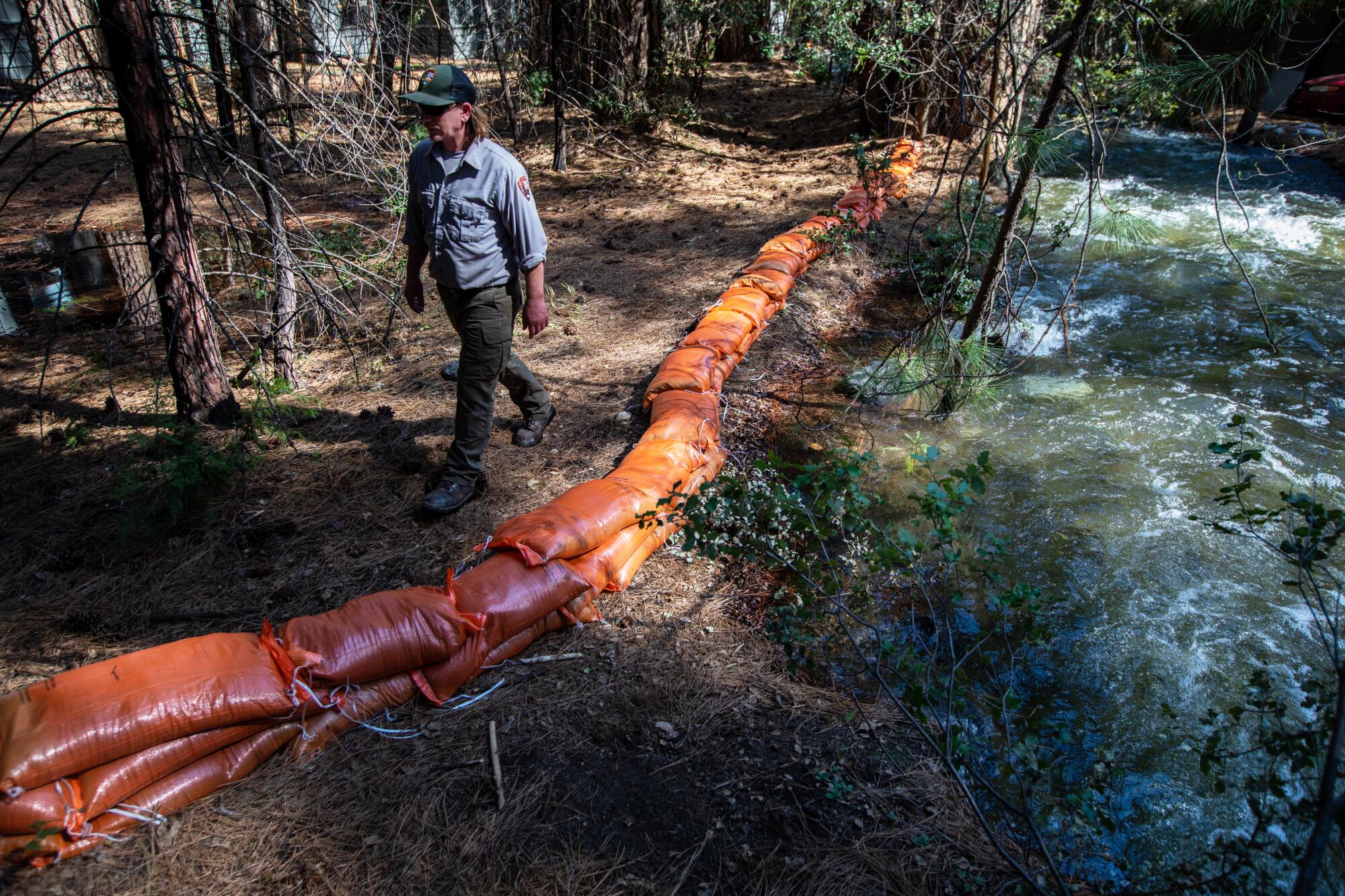
Beyond those ecological woes, adjusting the flow of visitors in a premier national park only a 5-hour drive from 18 million people in Southern California seemingly defies simple solutions even under the best conditions.
Closing the park for several days due to safety concerns, however, comes at a cost. Tourism in Yosemite — the heart of the Sierra Nevada economy — generates a cumulative benefit to the region of about $686 million a year, officials said, directly supporting nearly 8,000 jobs.
This week’s flooding doesn’t compare with the water levels of January 1997, when the river crested at about 23 feet and contributed to $178 million in damage, according to the National Weather Service.
That event left behind a jumble of overturned cabins, motor homes, smashed cars and swamped campgrounds. At Yosemite Lodge, nearly 300 rooms and cabins were flooded, and a nearby employee enclave known as Ozone was destroyed.
Now, park officials are worried about heavy snowpack still blanketing the Tuolumne River and Merced River basins, and waterfalls — Yosemite, Bridal Veil, Nevada, and Vernal Falls — flowing very high for this time of the year.
With the Merced River expected to reach flood stage off and on through early July, officials recently issued a grim warning: “Use extreme caution anywhere near flowing water; stay back from the riverbanks.”
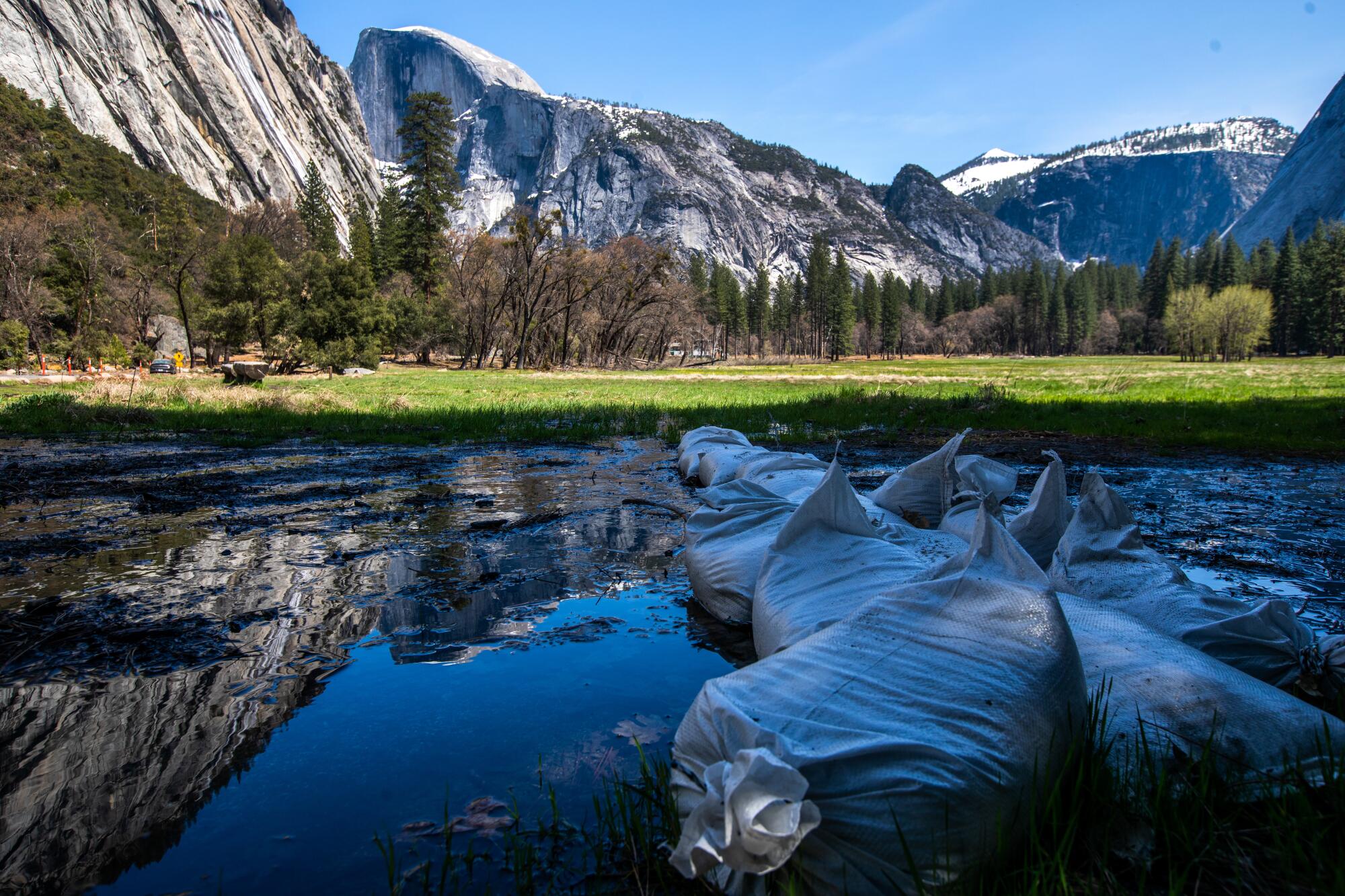
Steve Montalto, creative director of Visit Yosemite in Madera County, wouldn’t argue with any of that.
“Some folks are going to think, ‘Ooh! Let’s go see the magic of Yosemite in spring on steroids!’ ” he said, only half kidding. “That’s the dilemma facing park rangers and administrators right now.”
More to Read
Sign up for Essential California
The most important California stories and recommendations in your inbox every morning.
You may occasionally receive promotional content from the Los Angeles Times.
